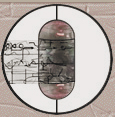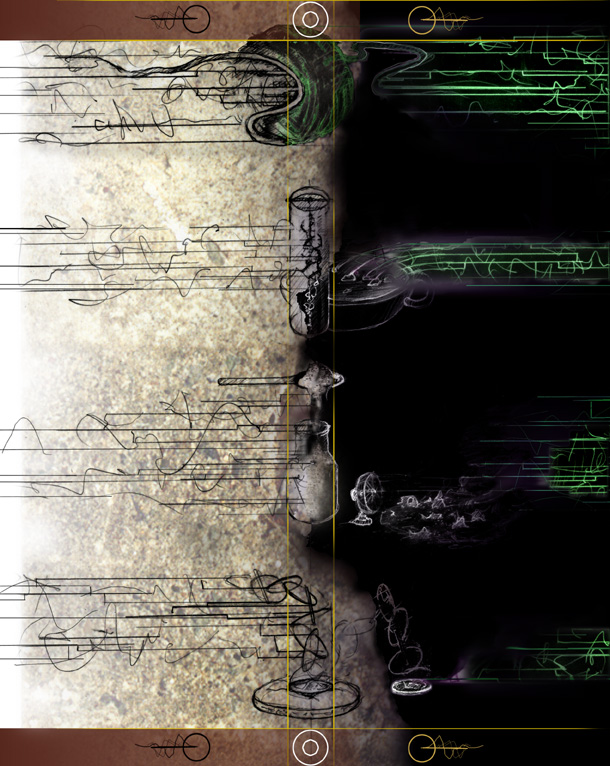

Codex of the Synapse: Folio B3.4
The Bonded Penny: Varieties of Pattern Language Amulet
[The Aboriginal] Turinga is an oval plaque made of stone or mulga-wood. It is both musical score and guide to the ancestor's travels...his passport and his ticket "back in."
Bruce Chatwin, The Songlines
 A Pattern
Language amulet can assume various forms. Some of these containers
may be adorned with Baroque flourishes or Shaker austerity, depending
on the local-world culture of the Keeper who crafted it. All Pattern
Language Amulets, regardless of their local-world origins have
one trait in common. Every amulet contains a frozen instance of
chaos, which the Keepers consider the purest (i.e. least reclaimed
into image) form of Pattern Language. Revealing some arrested
instant of randomness, usually in a natural process or a chance
operation, these fragments may be almost anything: a piece of
irregular glass, a string of sugar crystals, a tangled ball of
string, jars of sand, and even a single flipped coin, bonded where
it lay into a piece of clay or lead. Recent amulets have been
found, which employ static-electric, magnetic, and photomechanical
processes. In the event of an Uncreation Event, the amulet must
be destroyed, the pattern language frozen in place must be set
free. The sugar crystals are dissolved, the string unwound, the
sand scattered, the static-electric charge dispersed, the coin
pried loose and flipped again.
A Pattern
Language amulet can assume various forms. Some of these containers
may be adorned with Baroque flourishes or Shaker austerity, depending
on the local-world culture of the Keeper who crafted it. All Pattern
Language Amulets, regardless of their local-world origins have
one trait in common. Every amulet contains a frozen instance of
chaos, which the Keepers consider the purest (i.e. least reclaimed
into image) form of Pattern Language. Revealing some arrested
instant of randomness, usually in a natural process or a chance
operation, these fragments may be almost anything: a piece of
irregular glass, a string of sugar crystals, a tangled ball of
string, jars of sand, and even a single flipped coin, bonded where
it lay into a piece of clay or lead. Recent amulets have been
found, which employ static-electric, magnetic, and photomechanical
processes. In the event of an Uncreation Event, the amulet must
be destroyed, the pattern language frozen in place must be set
free. The sugar crystals are dissolved, the string unwound, the
sand scattered, the static-electric charge dispersed, the coin
pried loose and flipped again.
The Keepers cherish their amulets as objects suspended halfway in the Synapse and halfway in the local-world. These reliquaries of randomness often resemble lanterns, as if to to light one's path on a foray into the obscure Synapse. Other amulets look more like tokens of admission, reminding the Keeper who carries them that the Synapse is always accessed through turnstiles of one sort or another. In the ancient Greek custom (possibly of Synaptic origin), the pennies laid on the eyes of the dead are tributes both to Charon and to Chance.
|
ADJOINING FOLIOS:
|